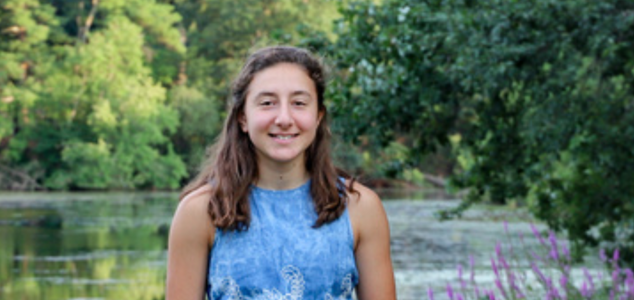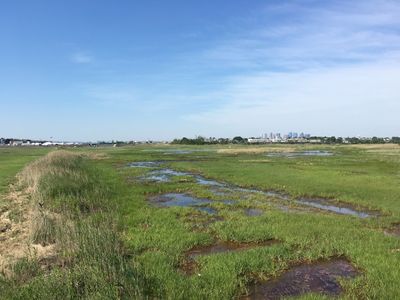A Look at Undergraduate Research: Boston’s Last Surviving Salt Marsh
By Meghan Bohannon
Several hundred years ago, when colonists ventured into the Boston area, they came across land sprawling with wetlands, mudflats, and salt marshes. Since then, much of the area has been filled in with landfill to build the city we know today. But though the urban landscape of Boston has changed dramatically over the centuries, one small nature preserve, located just a few miles northeast of Boston Logan International Airport, serves as a reminder of the way our environment shapes our lives.

Known as Boston’s last standing salt marsh, the Belle Isle Marsh Reservation faces several threats, including rising sea levels due to climate change and the recent proposed Suffolk Downs development. The marsh caught the attention of College of General Studies Associate Professor of Humanities Adam Sweeting for its evolving impact on the cultural history of Boston.
“It’s part of the cultural legacy of New England, and climate change is going to force us to rethink how we think about our landscape. That’s actually sort of the broader issues that my work is concerned with right now,” said Sweeting, whose scholarly interests include the environmental humanities and the intersections of literature, art history, and environmental issues. He plans to write a personal reflection on the marsh this summer, regarding its cultural legacy and potential future as a result of climate change.
When the COVID-19 pandemic postponed a conference presentation Sweeting had planned on the marsh last year, he was able to dive deeper into the marsh’s history with the help of undergraduate researcher Dena Ciampa (CGS ’20, CAS’22). Their partnership is supported by the Center for Interdisciplinary Teaching & Learning at CGS, which funds undergraduate researchers who partner with faculty members on a project of mutual interest.

In order to aid Sweeting’s research, Ciampa looked into new topics every week regarding the marsh, including future flooding projections of East Boston due to climate change, the health of the marsh’s ecosystem and its animal inhabitants, and the implications of a proposed redevelopment of Suffolk Downs.
Although the marsh is the last one standing in the Boston area, it serves the important function of preventing flooding to coastal areas.
“Climate change is causing more sea level rise, but the marsh can’t necessarily keep up with it because on the other side, there’s all this built land, preventing it from moving inland, so the marsh is being squeezed from both sides,” said Ciampa, who is currently studying environmental analysis and policy in the College of Arts and Sciences.
Moreover, the Suffolk Downs development would bring more people to the area, adding further stress to the marsh. According to Sweeting and Ciampa, these issues of gentrification would alter the character of the surrounding neighborhood of East Boston.

Despite the pandemic confining Ciampa’s research to her apartment, she was able to find many unique sources, including poems, newspapers, paintings of the marsh, and old maps from the Boston Public Library’s digital map collection. She said the research was interdisciplinary, epitomizing CGS’s focus on thinking and problem-solving across disciplines.
“I’ve always been interested in resource conservation, but it was really interesting to see the history and its complications with gentrification and social justice issues,” Ciampa said.
During the fall 2020 semester, Ciampa and Sweeting met virtually at least every 10 days, expanding their knowledge on the salt marsh. While it was her first time conducting undergraduate research, Ciampa said she greatly enjoyed the learning opportunity and the research experience.
For Sweeting, the feeling was mutual.
“The opportunity to work so closely with an undergraduate was just terrific. I would encourage more of my colleagues to do this,” Sweeting said.
CITL provides stipends for CGS students to pursue paid undergraduate research with a member of the CGS faculty. Students interested in pursuing undergraduate research can learn more here.
